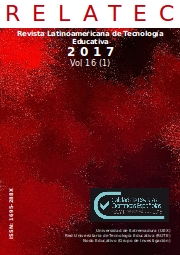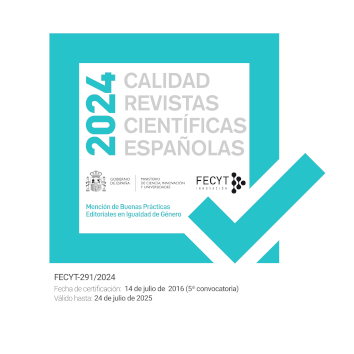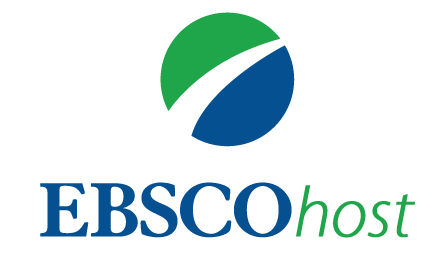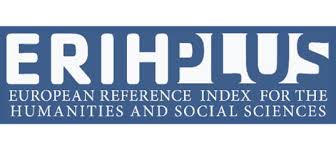The use of Instagram in the teaching and learning of Portuguese as a foreign language by Chinese students in the Un. of Aveiro
DOI:
https://doi.org/10.17398/1695-288X.16.1.21Keywords:
Aprendizagem de línguas, Rede Social Instagram, Compreensão e proução verbo-visual, Português Língua Estrangeira, Web2.0 / Language Learning, Social Network Instagram, Verbal-visual comprehension and production, Portuguese as a Foreign Language, Web2.0Abstract
The main purpose of this article is to highlight the potential of the Instagram social network as a didactic resource for teaching and learning languages. To do so, it presents a pilot study titled #aveiroenossople (Aveiro is ours PLE) about the use of Instagram in complementary activities in the teaching of Portuguese for Chinese students of Portuguese as a Foreign Language (PFL) of the University of Aveiro, whose products were advertised on the page Of the # AveiroeNosso-PLE project on the Wix platform. In order to study whether the Instagram social tool can contribute to the development of discursive skills of Chinese learners, both in the oral and written modalities, the study proposal was anchored in a conception of language as process and interaction, from which one understands the production and comprehension of text – oral or written – as social practice. In the methodological path, three stages were accomplished in the development of the work, namely: (i) planning, (ii) implementation, and (iii) evaluation. In general terms, the results point to contributions from the use of Instagram for the development of competences related to textual and multimodal production and comprehension, the cultural competences necessary and intrinsic to the learning of a foreign language, as well as for the formation of learning communities by means of the interactions between the participants.
Downloads
References
Al-Bahrani, A. & Patel, D. (2015). Incorporating Twitter, Instagram, and Facebook in Economics Classrooms. The Journal of Economic Education, 46(1), 56–67. Retirado de http://dx.doi.org/10.1080/00220485.2014.978922
Al-Ali, S. (2014) Embracing the Selfie Craze: Exploring the Possible Use of Instagram as a Language mLearning Tool. Issues and Trends in Educational Technology, 2(2). Retirado de https://journals.uair.arizona.edu/index.php/itet/article/view/18274/18092
Araújo, R. F. (2013). Recursos da Web 2.0 e suas contribuições na prática pedagógica do ensino de Biblioteconomia. InCID: R. Ci. Inf. e Doc., Ribeirão Preto, v. 4, n. 1, p. 163-181, jan./jun. Retirado de: http://dx.doi.org/10.11606/issn.2178-2075.v4i1p163-181
Ardichvili, A. (2008). Learning and knowledge sharing in virtual communities of practice: motivators, barriers, and enablers. Advances in Developing Human Resources. 10(4), 541-554. Retirado de: http://journals.sagepub.com/doi/abs/10.1177/1523422308319536.
Bell, M. A. (2013). Picture this! Using Instagram with students. Internet@Schools,, 20(4), 23-25. Retirado de: http://connection.ebscohost.com/c/articles/90595503/picture-this-using-instagram-students
Bizarro, R (2012). Língua e cultura no ensino do PLE/PLS: Reflexões e exemplos. Lingvarvmarena. 3, 117 - 131. Retirado de: http://ler.letras.up.pt/uploads/ficheiros/10953.pdf
Bottentuit, J. B. & Albuquerque, O. C. (2015). Ferramentas da Web 2.0 no processo de ensino aprendizagem da língua inglesa: um estudo na escola de Idiomas Yázigi na cidade de São Luís. Anais Eletrônicos do 6º Simpósio Hipertexto e Tecnologias na Educação e 2º Colóquio Internacional de Educação com Tecnologia. Retirado de: http://www.nehte.com.br/simposio/anais/Anais-Hipertexto-2015/Ferramentas%20Web.pdf
Bozkurt, A. & Ataizi, M. (2015). English 2.0: Learning and Acquisition of English in the Networked Globe with the Connectivist Approach. Contemporary Educational Technology, 2015, 6(2), 155-168. Retirado de: http://files.eric.ed.gov/fulltext/EJ1105725.pdf
Campión, R. S., & Nalda, F. N. (2012). Web 2.0 and higher education: its educational use in the university environment. European Journal of Open, Distance and E-Learning, 2, 1-18. Retirado de: https://eric.ed.gov/?id=EJ992491
Coll, C., & Monereo, C. (2010). Psicologia da educação virtual: aprender e ensinar com as tecnologias da informação e da comunicação. São Paulo: Artmed.
Costa, C., Alvelos, H., & Teixeira, L. (2015). The use of Web 2.0 tools by students in learning and leisure contexts: a study in a Portuguese institution of higher education. Technology, Pedagogy and Education, 25(3), 377–394. Retirado de: http://dx.doi.org/10.1080/1475939X.2015.1057611
Gabriel, M. (2013). Educ@r: a (r)evolução digital na educação. São Paulo: Saraiva.
Huang, W., Hood, D. W., & Yoo, S. J. (2014). Motivational support in Web 2.0 learning environments: a regression analysis based on the integrative theory of motivation, volition and performance. Innovations in Education and Teaching International, 2014, Vol. 51, No. 6, 631–641. Retirado de: http://dx.doi.org/10.1080/14703297.2013.796718
Huang, W., Hood, D. W., & Yoo, S. J. (2014). Motivational support in Web 2.0 learning environments: a regression analysis based on the integrative theory of motivation, volition and performance. Innovations in Education and Teaching International, 51(6), 631–641. Retirado de: http://dx.doi.org/10.1080/14703297.2013.796718
Leite, B. S. & Leão, M. B. C. (2009). A Web 2.0 como ferramenta de aprendizagem no ensino de ciências. En J. Sánchez (Ed.): Nuevas Ideas en Informática Educativa, Volumen 5, pp. 77 – 82, Santiago de Chile. Retirado de: http://www.tise.cl/2009/tise_2009/pdf/10.pdf
Maloney, E. (2007). What Web 2.0 can teach us about learning. Chronicle of Higher Education, 53(18), B26. Retirado de https://eric.ed.gov/?id=EJ756805
Moreira, C. & Nascimento, N. (2012). Letramento digital e cultura tecnológica: Uma apropriação escolar urgente. Linguagens, identidades e letramentos, 2(2), 53-66. Retirado de: http://www.poscritica.uneb.br/revistaponti/arquivos/volume2-n2/7.LETRAMENTO-DIGITAL-E-CULTURA-revistaponti-vol2-n2.pdf
O’Reilly, T. (2005). What is Web 2.0 – Design patterns and business models for the next generation of software. Retirado de: http://oreilly.com/web2/archive/what-isweb-20.html
Rojo, R. (2011). A Teoria dos gêneros discursivos do círculo de Bakhtin e os multiletramentos. São Paulo: Unicamp.
Romani, C. C. (2007). Aprendizaje colaborativo. Nuevos modelos para uso educativo. En C. C. Romani & H. P. Kuklinski, Planeta Web 2.0 inteligencia colectiva o medios fast food. México: Flasco.
Safran, C., Helic, C., & Gutl, C. (2007). E-Learning practices and Web 2.0. In Proceedings
of ICL 2007, Villach, Austria.
Selwyn, N. (2007). Web 2.0 applications as alternative environments for informal learning –A critical review. Paper for OCED-KERIS expert meeting, South Korea, 16–19 October 2007. Session 6 – Alternative Learning Environments in Practice: Using ICT to Change Impact and Outcomes. Retirado de: https://www1.oecd.org/edu/ceri/39458556.pdf
Silva, S. (2009). Blog como recurso educacional na Web 2.0. Revista Iluminart do IFSP. 1(3), 27-35. Retirado de: http://www.pucrs.br/famat/viali/tic_literatura/artigos/blogs/4.pdf
Xavier, A. C. (2015). Desafio do hipertexto e estratégias de sobrevivência do sujeito contemporâneo. Estudos da Língua(gem), Vitória da Conquista, 13(2), 73-90. Retirado de: http://www.estudosdalinguagem.org/index.php/estudosdalinguagem/article/viewFile/473/426
Downloads
Published
Issue
Section
License
Authors who publish in this journal accept the following conditions:
1. The Author retains copyright in the article. Upon acceptance of the article, the author shall grant to the Publisher the right of first publication of the article. with the dcoument registered with the Creative Commons Attribution-NonCommercial-NoDerivative 4.0 International (CC BY-NC-ND) license, which allows to third parties to use what is published whenever they mention the authorship of the work and the first publication in this journal.
2. Authors can make other independent and additional contractual agreements for the non-exclusive distribution of the article published in this journal (eg, include it in an institutional repository or publish it in a book) provided they clearly indicate that the work was published for the first time in this journal.
3. Authors are allowed and recommended to publish their work on the Internet (for example on institutional or personal pages) before and during the review and publication process, as it can lead to productive exchanges and a greater and faster diffusion of published work (see The Effect of Open Access).









